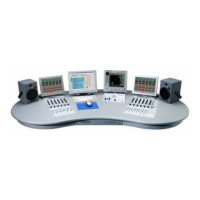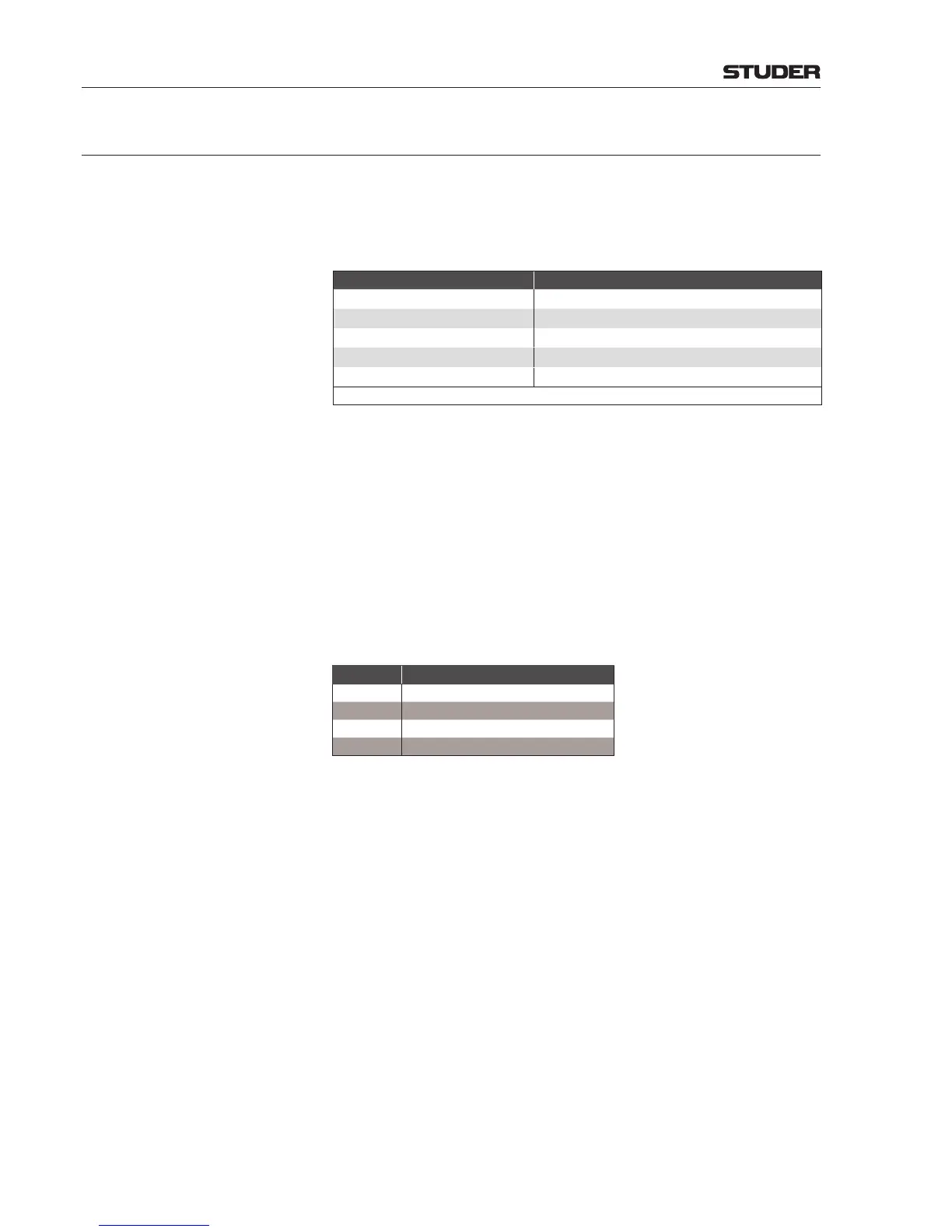OnAir 3000 Digital Mixing Console
5-136 Operation
Document generated: 10.10.14
SW V6.0
5.11 External Audio Synchronization
The audio synchronization source may be internal or external. For external
synchronization, the type of available external synchronization signal(s),
i.e., the sync source, must be defined with the configuration tool (see chapter
6.5.34). The different sync signals are fed to the system via the SCore’s Audio
Clock card.
Available Sync Sources Possible Sampling Rates OnAir 3000
INTERNAL
44.1 / 48 kHz ±100 ppm (default)
AES/EBU
44.1 / 48 kHz
WORDCLOCK
44.1 / 48 kHz
VIDEO, 25 frm/s*
44.1 / 48 kHz
VIDEO, 29.97 frm/s*
44.1 / 48 kHz
* NO drop frame sources allowed/possible
Auto Select This is a function accessible in the configuration tool (see chapter 6.5.34). It
defines the behavior of the console if the external clock should fail.
If ‘Auto Select Off’ is configured, the console will automatically switch to
its internal clock whenever the external sync source signal is missing, except
if the selected external sync source is ‘video’ – then the selection remains in
video mode. In any case a message box is displayed, and a warning (Missing
External Clock) is added to the error list. As soon as a valid external clock
signal is available again, the console is re-synchronized.
If ‘Auto Select On’ is configured, the external sync source is automatically
selected according to the priority given in the table below. As soon as a valid
external clock signal with a higher priority is available again, the console is
re-synchronized to that signal.
Priority Audio Clock (Sync) Source
1
Video Clock
2
AES/EBU Clock
3
Word Clock
4
Internal
Notes: The Audio Clock card must not be removed from the system as long as the
latter is powered on; otherwise, the DSP cards will indicate ‘fail’, and the
audio signal will neither be audible nor processed.
DIP switches on the Audio Clock card allow selecting either high impedance
(OFF) or 75 Ω termination (ON) for the video and wordclock inputs individu-
ally.

